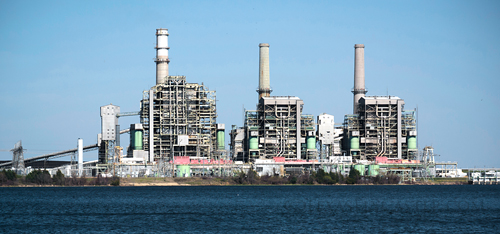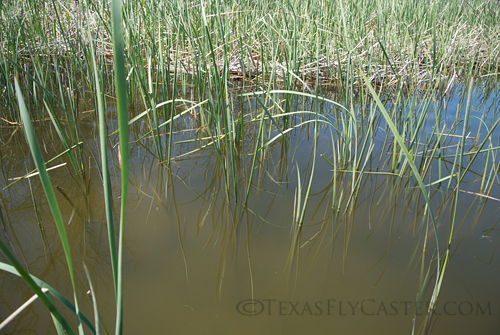Lake Monticello; Worth a Look for Fly Fishing Adventure

All things warm and wonderful from the generation of electricity. That includes warmer than average water temperatures on Lake Monticello.
How many times have we shut things down for winter, bowing to the brutal (by Texas standards) North Texas winters, and putting it all away for months at a time? We settle for less in the days of $4-dollar gas, rather than look for more, until now.
[ppw id=”119934144″ description=”Lake Monticello Fly Fishing” price=”.10″]
Sure, there were the forays to generation lakes like Fairfield for the winter freshwater redfish, but that idea was fleeting, and after some major fish kills, Lake Fairfield is off just about everybody’s radar – including the Texas Parks and Wildlife Department (TPWD). Of course they put the “chamber of commerce” version out front, but if you dig deeper, you read that they have suspended stocking that lake.
Lake Monticello is about three hours east of Dallas, Texas, and a lake that came onto my radar because of what I’ve seen from Rob Woodruff’s experiences there. What really turned me onto this lake, besides the fact it has water in it, is its small size.
If the air is cold, and the water is not spring/summer warm, it makes sense to me to find smaller water bodies that offer two things; 1) protection from the wind, and 2) shorter distances in case I find myself in the water. If you can add a warmwater outlet from a power plant, well that could be a slow motion dream sequence.
Go to the TPWD website information on Monticello, and another encouraging thing is the lack of fancy videos, new photographs and excited reports. This lake may be a sleeper. Next on the clicker is the lake level (these days) – Monticello Lake Level. Just as I suspected – they have plenty of water. How many aces are there in a deck!
As I looked at the satellite, the first thing I noticed is the the size of Monticello, and the first thing I looked for is the distance between launch and the power plant water outlet.
FRIDAY REPORT
I drove across the Monticello on the FM 127 Bridge, and immediately found myself in the power plant’s no-man’s-land, and after trying SW22-SW19, realized the power plant side had no access. The fact it’s a power plant means security is necessarily tight and fences abut the road where one would logically want to slide a boat down the embankment into the water. It was either that or thickets so dense as to be impenetrable. PLAN B; back across the bridge (all short distances), I turned off left onto the small roads that lead to Monticello Park. If you like quaint, drive slow so you don’t hit the dozens of free ranging chickens along the way, and make sure you go slow so the bass boaters have time to correct out of the middle of the narrow road. Once you get to the park you’ll find it’s a pay park, so make sure you have two whopping Washington’s ready, along with a pen to fill out the envelope.
It was across from the belching power plant, a deceiving distance away. I stuck my hand in the water, and it wasn’t exactly a sauna. PLAN B part 1 was a full rethink of trying to reach the water outlet and warm water. The wind was beginning to crank, and the coves on nearby the boat launch were offering obvious protection.

Water was a bit stirred by the winds, but this is the habitat where bass are doing their spring thing.
As I paddled into the first cove, there wasn’t any obvious action in the shallows, but the habitat was absolutely different from anything on Ray Roberts. There were these reeds on hard sand along the shoreline, alternating between dense and alive, dispersed, and dead patches with no green on top.
About forty feet off the shorelines, the color changed drastically with vegetation and depth. This lake obviously doesn’t suffer from the winter cold.
I stood up on the Native to get a better look, and saw a big lighter colored area (maybe five feet across), and a nice male bass hovering over what was obviously a spawning bed. He darted off into the reeds, and then cautiously made his way back to the bed. Nature at its best. It was early so I decided to leave that nursery school alone, and maybe on the way back I could see if these lovers would bite. Besides the next stand of reeds could hold more, bigger.
I left that cove, and skirted up to the next one. It appeared to be without any of that same habitat, so it was on to the next one. By this time I was getting closer to the bridge, could see the birds working the warm water, and was getting used to hearing the bass boats hitting their “hole shots” and blowing by at 50-mph – straight to the bridge, shut it down, pass under, and then hit the pedal again. After that, I had no idea where they were going, but curiosity was about to kill this cat.
To be continued …
NOTE: You’ll always see me in a personal floatation device when kayaking in winter, and up until the weather gets hot. After that, my PFD is always within hand’s grasp, and on (in rare deeper water runs). This year I plan on getting one of those fancy Co2 auto inflating PFD’s and will let you know how that works out. I’ve seen drowning victims, and it isn’t good.
[/ppw]

You must be logged in to post a comment.